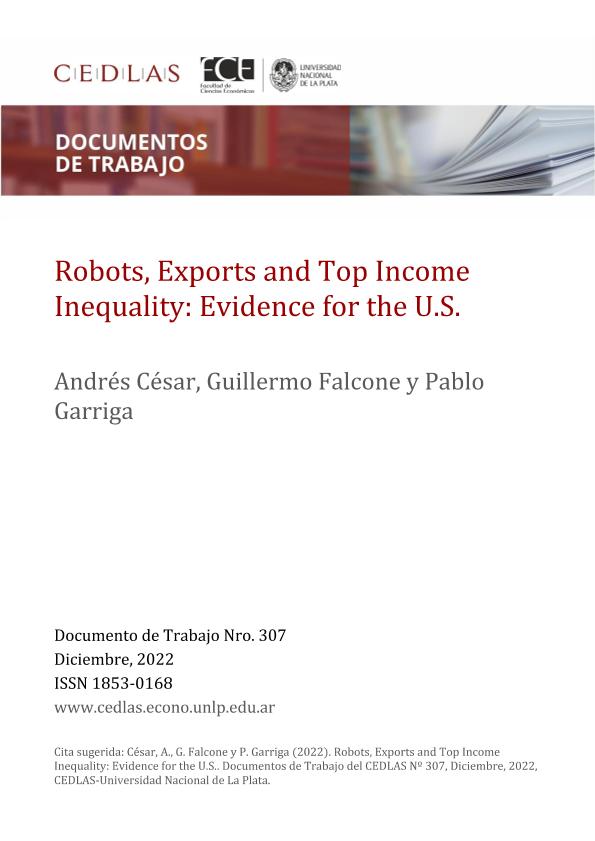Artículo
Robots, Exports and Top Income Inequality: Evidence for the U.S.
Fecha de publicación:
12/2022
Editorial:
Centro de Estudios Distributivos, Laborales y Sociales
Revista:
Documentos de trabajo (CEDLAS)
ISSN:
1853-0168
Idioma:
Inglés
Tipo de recurso:
Artículo publicado
Clasificación temática:
Resumen
The last decades have witnessed a revolution in manufacturing production characterized by increasing technology adoption and a strong expansion of international trade. Simultaneously, the income distribution has exhibited both polarization and concentration among the richest. Combining datasets from the U.S. Census Bureau, the U.S. Internal Revenue Service, the International Federation of Robotics, EU KLEMS, and COMTRADE, we study the causal effect of industrial automation on income inequality in the U.S. during 2010–2015. We exploit spatial and time variations in exposure to robots arising from past differences in industry specialization across U.S. metropolitan areas and the evolution of robot adoption across industries. We document a robust positive impact of robotics on income for only the top 1 percent of taxpayers, which is largest for top income fractiles. Therefore, industrial automation fuels income inequality and, particularly, top income inequality. According to our estimates, one more robot per thousand workers results in relative increments of the total taxable income accruing to fractiles P99 to P99.9, P99.9 to P99.99 and P99.99 to P100, of 2.1 percent, 3.5 percent and 5.9 percent, respectively. We also find that robotization leads to increased exports to high-income and upper-middle-income economies, and that this is one of the key mechanisms behind the surge in top income inequality.
Archivos asociados
Licencia
Identificadores
Colecciones
Articulos(CCT - LA PLATA)
Articulos de CTRO.CIENTIFICO TECNOL.CONICET - LA PLATA
Articulos de CTRO.CIENTIFICO TECNOL.CONICET - LA PLATA
Citación
César, Andrés Manuel; Falcone, Guillermo Enrique; Garriga, Pablo; Robots, Exports and Top Income Inequality: Evidence for the U.S.; Centro de Estudios Distributivos, Laborales y Sociales; Documentos de trabajo (CEDLAS); 307; 12-2022; 1-54
Compartir




